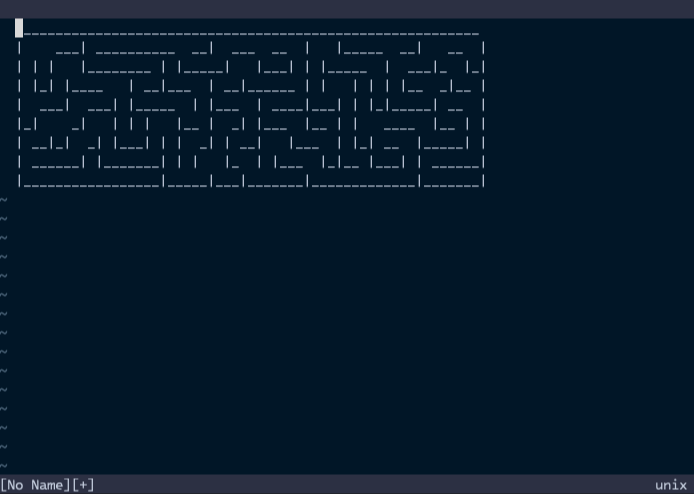Adjusting Maze Size to Fit the Window
In the previous section, we outputted the maze to a buffer. However, the maze size can sometimes be too large or too small for the window. It would be better to have a maze that fits the current window size.
Let's modify the plugin to ensure the generated maze fits the current window size.
import type { Entrypoint } from "@denops/std";
import * as fn from "@denops/std/function";
import { Maze } from "maze_generator";
export const main: Entrypoint = (denops) => {
denops.dispatcher = {
async maze() {
await denops.cmd("enew");
const winWidth = await fn.winwidth(denops, 0);
const winHeight = await fn.winheight(denops, 0);
const maze = new Maze({
xSize: winWidth / 3,
ySize: winHeight / 3,
}).generate();
const content = maze.getString();
await fn.setline(denops, 1, content.split(/\r?\n/g));
},
};
};
In this code, we utilize the function module (aliased to fn) of
@denops/std (Denops Standard Library) to call winwidth(), winheight(), and
setline() functions. Then, we create a maze that fits the current window size
and write it to the buffer.
So why do we use the function module instead of denops.call? With
denops.call, developers must know the function name, arguments, return type,
and manually cast the return value to the expected type (like as string).
However, with the function module, developers can use auto-completion, type
checking, etc. It is more convenient and safe to use the function module.
tip
The function module of the @denops/std library provides a set of functions
that are available on both Vim and Neovim. If you'd like to use Vim or Neovim
only functions, use the vim or nvim module under the function module
instead.
See the function module of @denops/std API document for more details.
Restart Vim, rerun the :Maze command, and then you can see:
